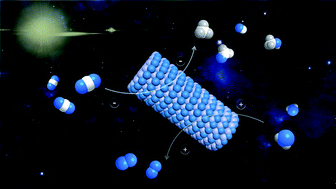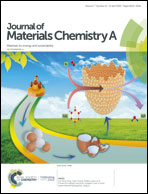One-dimensional copper-based heterostructures toward photo-driven reduction of CO2 to sustainable fuels and feedstocks
Abstract
The current rapid industrial development causes both a heavy reliance on non-renewable energy and a dramatic increase in atmospheric CO2 concentration, which in turn lead to severe energy and environmental crises. Utilizing the abundant solar energy to convert CO2 into usable or storable energy resources is considered to be a promising strategy to reverse the preceding challenges. Among studied formulations, earth-abundant one-dimensional (1D) copper-based photocatalysts, such as copper oxide, cuprous oxide and cuprous sulfide, featuring efficient visible light harvesting, facile CO2 adsorption and directional long-distance electron transfer assisted by the high length-to-diameter ratio of the 1D geometry, are ideal platforms to support suitable co-catalysts for the construction of various 1D copper-based heterostructures for CO2 photoreduction with enhanced photoactivity and photostability. This review will concisely recap the recent progress in synthetic preparation of different 1D copper-based nanomaterials with controllable structure, interface and morphology, particularly highlighting the application of 1D copped-based heterostructures for CO2 photoreduction via different mechanisms (e.g., controllable band alignments and multi-step electron flow) to value-added chemicals and fuels. Finally, some personal perspectives into future directions and challenges on rational design of highly efficient 1D copper-based composite materials for artificial CO2 reduction are presented, and are expected to promote the rapid progress of this dynamic research area.

- This article is part of the themed collection: Recent Review Articles


 Please wait while we load your content...
Please wait while we load your content...